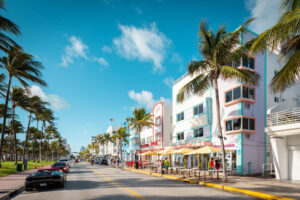Lessons From the Other Crash of the 1920s

Most U.S. investors know about the 1929 stock market crash.
Yet history has all but forgotten another financial crash that happened in the mid-1920s far from Wall Street…
The great Florida property bubble.
Like all bubbles, the Florida property boom consisted of three elements: a compelling story, a roaring boom and the inevitably painful bust.
History is chock-full of investment bubbles. And they are more similar than you may think.
Click here to watch Nicholas’ latest video update.
Understanding the dynamics behind financial booms and busts is one of the most important things you can do as an investor.
And there is no better way to do that than to look at the financial manias of the past.
The Story
The Roaring ’20s may have been the best decade of the 20th century.
The country was prosperous. The automobile opened up the country. New technologies like the radio were changing lives.
The time was ripe for a good old-fashioned financial bubble.
Students of financial history will tell you a compelling investment story can drive human beings into a frenzy. And Florida property offered just that.
In 1900, the population of Florida was around 500,000. The population of Miami was a mere 5,000.
The railways had extended into West Palm Beach and Miami. They reached Key West by 1912.
By 1920, Florida’s population had almost doubled to nearly a million people.
Florida had been an exclusive destination. Only the well-heeled could afford this alternative to pre-World War playgrounds like France’s Côte d’Azur.
But times were changing.
The Everglades were being drained, creating new dry land.
And America’s middle class was expanding fast. They had good jobs, decent pay, disposable income and spare time to go on vacation.
Gradually, more people moved south, looking for a better quality of life.
The Boom
Florida’s image transformed into a newly discovered paradise by the sea. Property prices began to rise. A land and development boom ensued.
In 1921, property developer George Merrick began selling lots in the west of Miami.
He knew the power of marketing. Merrick spent $3 million in a single year on advertising. He hired a small army of 3,000 salesmen. A fleet of buses took buyers down to Florida from New York, Chicago and as far away as San Francisco.
Another developer named Carl Fisher had already filled enough swamps to create the resort of Miami Beach. He even bought a huge lighted billboard in Times Square proclaiming “It’s June In Miami.”
By 1925, Miami had 25,000 estate agents working out of 2,000 offices.
Land that had gone for $22 an acre was selling for $200 an acre.
The promise of more massive gains lured in speculators from all over America.
By 1925, about two-thirds of real estate in Florida was sold by mail to speculators who had never been to the state.
The boom even led to the rise of a new kind of financial instrument- a bitcoin of its day.
“Binder boys” would show land to prospective buyers. Buyers, in turn, could effectively buy options on the land by paying a “binder.”
A binder was a nonrefundable deposit due within 30 days.
But rather than pay off the balance, the land buyer would often “flip” the binder for a profit to someone else.
Binders allowed some lots in Miami to be bought and sold as many as 10 times a day.
The Bust
Inevitably, the boom turned to bust.
Newspaper reports began to warn of Florida land scams. The state of Ohio even banned some companies from selling property in Florida.
The supply of buyers dried up. Many who had bought “binders” suddenly couldn’t find a greater fool to flip them to.
Things only got worse.
An unusually cold winter made investors question Florida’s tropical reputation. In September 1926, a hurricane swept through Miami and killed nearly 400 people. Florida then suffered a smallpox epidemic.
As a writer for The Nation wrote, “The world’s greatest poker game, played with building lots instead of chips, is over. And the players are now cashing in or paying up.”
The Aftermath
You see signs of the Florida land boom even almost a century after its collapse.
After all, it left behind entire new cities, such as Coral Gables, Miami Springs and Hollywood. The iconic Biltmore Hotel in Coral Gables is a monument to the 1920s Florida property boom.
This is also characteristic of bubbles. What they offer does often change the world. (Dutch tulip bulbs are a prime exception.) The Florida land boom put the state on the map.
Similarly, the internet changed the world. But as happened with the Florida property boom, the ensuing bust ensured that few traders kept the money they made.
In the same way, today’s technologies – electric vehicles, alternative energy sources, biomedical breakthroughs, etc. – will also change the way we live.
But that doesn’t guarantee you will make a fortune.
If you do invest in them, think of those who invested in Florida “binders.”
And make sure you have a seat before the game of musical chairs stops.
Good investing,
Nicholas





.png)

